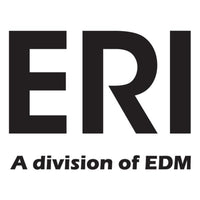Effective follow-up care is crucial for high-quality healthcare, significantly influencing patient outcomes and the efficiency of medical practices. Missed appointments, commonly known as "no-shows," present a major challenge, leading to inefficiencies, increased costs, and adverse effects on patient health. Fortunately, recent advancements in follow-up care strategies and patient communication are proving effective in tackling these issues, enhancing both patient outcomes and operational efficiency.
The Challenge of Patient No-Shows
Patient no-shows have long plagued healthcare providers, with median appointment no-show rates ranging from 5% to 7%, according to recent MGMA DataDive benchmarks. These missed appointments are not just an inconvenience; they have a substantial financial impact, with one widely cited estimate placing the cost to U.S. healthcare providers at a staggering $150 billion annually. For hospitals and clinics, especially those with high-cost equipment like MRI scanners, these no-shows represent lost revenue and underutilized resources.
For example, an MRI scanner, which can cost upwards of $500,000, requires a high utilization rate to justify its expense. When appointments are canceled or missed, the machine sits idle, driving up the cost per scan and diminishing the return on investment. Similarly, the demand for radiology services such as CT scans, MRIs, and x-rays is high, with each canceled procedure representing a lost opportunity for reimbursement and a direct hit to the hospital's bottom line.
Effective Strategies for Reducing No-Show Rates
To combat the negative impacts of no-shows, many medical groups have implemented various strategies aimed at improving follow-up care and patient communication. These strategies not only help reduce no-show rates but also enhance patient satisfaction and care outcomes.
One of the most effective tools in reducing no-show rates is the implementation of automated appointment reminders. These systems can send reminders via text messages, emails, or phone calls at strategic intervals, such as five days, three days, and one day before the scheduled appointment. By keeping the appointment top-of-mind for patients, these reminders significantly reduce the likelihood of a no-show.
Some medical practices have introduced no-show policies that include fees for missed appointments without appropriate notice. These fees, which can range from $25 for an office visit to $100 for a surgical appointment, serve as a deterrent for patients who might otherwise skip their appointments. While some practices are hesitant to implement these fees due to administrative challenges, they have proven effective in reducing no-show rates in practices that have adopted them.
In cases where automated reminders are insufficient, personalized communication strategies can be highly effective. Practices that add direct calls to patients with a history of missed appointments often see improved attendance rates. This personal touch helps ensure that patients are aware of their appointments and understand the importance of attending, particularly for those with chronic conditions or complex healthcare needs.
The Role of Pre-Visit Communication
Pre-visit communication is another critical component of effective follow-up care. Engaging with patients before their appointments helps ensure that they are prepared and committed to attending. This can include pre-visit phone calls to confirm patient details, such as contact information and medication lists, as well as to address any concerns or questions the patient may have. The Mayo Clinic's use of a pre-appointment intake (PAI) process, where patients are contacted one to three days before their appointment, has shown significant benefits, including improved patient rooming times and enhanced medication reconciliation.
Investing in Modern Technology
While no-show rates can be reduced through better communication, investing in modern healthcare technology is also essential. Upgrading outdated imaging equipment and integrating digital health capabilities can help mitigate the impact of missed appointments.
Advanced Imaging Technology: Newer imaging systems offer features like automated quality control and real-time performance monitoring, reducing the likelihood of breakdowns and the need for rescheduling. Additionally, modern MRI scanners equipped with noise-canceling technology and ergonomic designs enhance patient comfort, reducing the likelihood of patient-initiated cancellations due to anxiety or discomfort.
Digital Health and Remote Capabilities: Enhancing existing systems with digital health capabilities, such as remote scanning and tele-radiology services, allows hospitals to access a broader pool of specialists and technologists. This flexibility ensures that patient appointments are less likely to be delayed due to staff shortages or logistical challenges. Furthermore, digital scheduling systems that offer easy rescheduling options and automated reminders can significantly reduce no-show rates.
Overall, enhancing follow-up care is vital for optimizing healthcare delivery and improving patient outcomes. Addressing the challenge of no-shows through advanced communication strategies and modern technology not only minimizes inefficiencies and financial losses but also ensures that patients receive timely and effective care. By leveraging automated reminders, personalized outreach, and cutting-edge imaging technology, healthcare providers can better manage appointment attendance and reduce the adverse impacts of missed visits. Continued investment in these areas will be crucial in advancing patient care, improving operational efficiency, and ultimately, achieving better health outcomes for patients.



